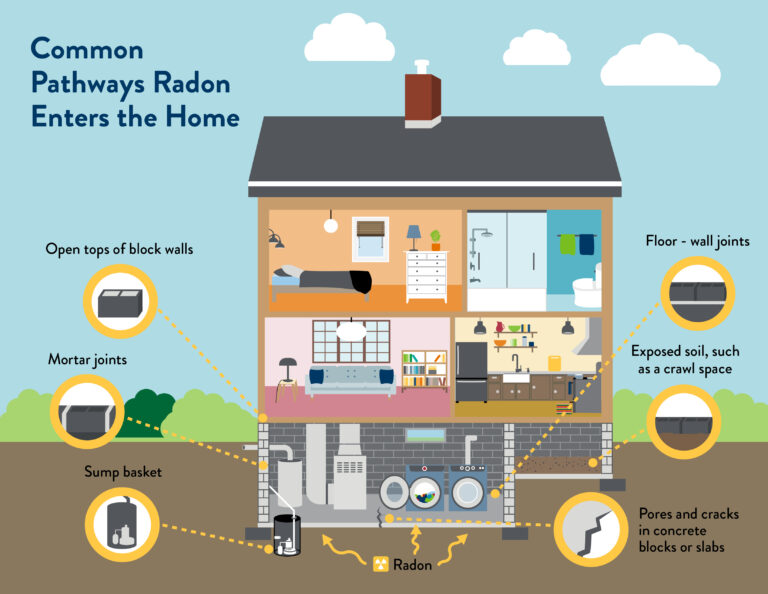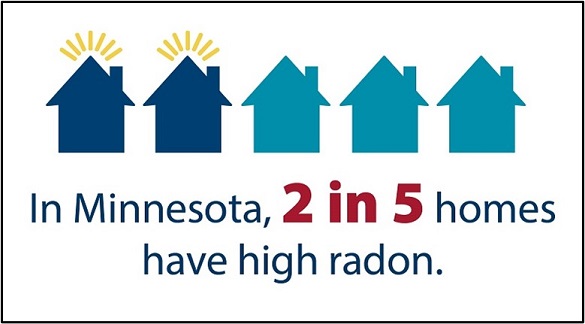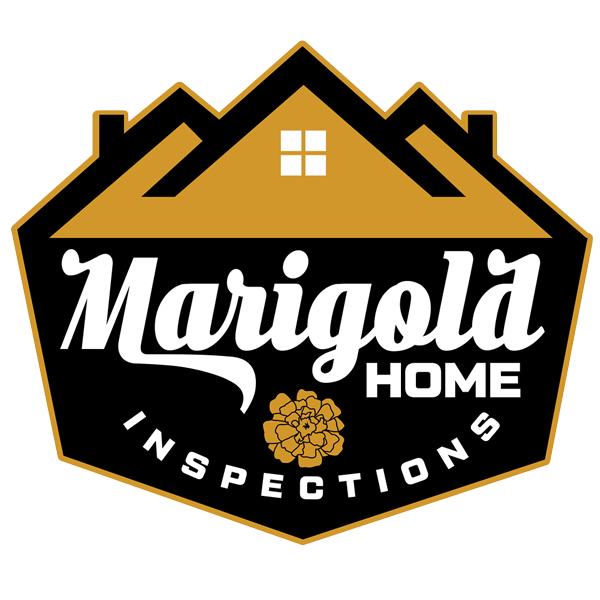Written by Jake Miller, Certified Professional Home Inspector
Est. Reading Time: 6 minutes
Seven years ago my family and I decided to move closer to Minneapolis in search of the perfect house for our growing family. When we found the home we loved the most, we had a home inspection. At that time, a Radon test wasn’t mentioned at all; I didn’t even know it was something to consider. I’d heard about Radon in my science classes when we were going through the periodic table, but I honestly didn’t pay much attention and definitely didn’t have a real understanding of what it is.
Then, during my training to become a Certified Home Inspector, Radon was talked about extensively and why we should be concerned about it. When I had my home tested for Radon, it turned out that we do have elevated levels in our home (above the recommended level) and we’ll be having a mitigation system installed in the very near future. I think there are many people out there who, like me, didn’t know what’s the big deal about Radon is, so I wanted to take some time to touch on a few things that might be helpful in understanding what Radon is and why it is dangerous, how we test for it, and what can be done about it if a higher level is found.
What is Radon?
“Radon is a naturally-occurring radioactive gas that can cause lung cancer. Radon gas is inert, colorless and odorless. Radon is naturally in the atmosphere in trace amounts. Outdoors, radon disperses rapidly and, generally, is not a health issue. Most radon exposure occurs inside homes, schools and workplaces. Radon gas becomes trapped indoors after it enters buildings through cracks and other holes in the foundation.” (Source)
Radon is formed when naturally occurring radioactive materials begin to break down within the soil, rocks, and water in the ground. It is present in every area of the United States of America (Source), though some areas have higher levels than others. There are a lot of factors that go into why one area may have more radon than others, but if you live in the upper Midwest, the likelihood of having a higher level of radon is more than other areas of the country. A study by the US Geological Survey (USGS) found that areas that were covered with glacial ice (like Minnesota) tended to have high levels of the material needed for Radon to be produced (Source).
Why is Radon dangerous?
When Radon gas begins to decay, fine radioactive particles settle in our homes which we then inhale into our lungs. This Radon exposure can cause lung cancer which is estimated to kill 21,000 people annually in the US, according to the Environmental Protection Agency (EPA) and Minnesota Department of Health (MDH). It is the leading cause of lung cancer for non-smokers, and second leading cause for smokers.
In Minnesota, not only our geological makeup leads to higher levels of Radon gas, but we are also inside our homes for long periods of time for much of the year, leading to more exposure. In addition, many homes in Minnesota have basements, which create more access points for Radon to enter the home.
Since Radon gas is colorless and odorless, there is no way to know whether your home has high levels except to use specialized tests to detect the presence of the gas.
How do I test for Radon?
There are many Radon test types available. Some are able to be conducted by you and can be purchased online. These types of tests can take upwards of 90 days to complete and require your test to be sent to a facility for evaluation and reporting. The other option is to use a MDH Licensed Radon Measurement Professional and Radon Mitigation Professional.
Since the sale/purchase of a home is an ideal time to have a home tested for Radon, Marigold Home Inspections offers Radon Testing as an add-on service to your home inspection. We also offer it as a stand alone service if your home was never tested, or if you are due to re-test. (Radon testing should be done every 2-5 years or whenever any major home repair or renovations are made. If the foundation or walls are changed or moved, a radon test should be done as well.)
Our licensed technicians will provide instructions on how to prepare your home for the test, and then set up the Radon Testing equipment in your home. The test must run for a minimum of 48 hours and then the Tech will schedule a time to pick up the equipment. We use state-of-the art technology that allows results of the report to be emailed to you immediately upon completion of the report, rather than waiting for the Tech to arrive and retrieve results.
What do I do with the Radon results?
After your Radon test is completed, you will receive your results via email. The EPA has set a recommendation that levels should be under 4 pCi/L (Source). The unit of measurement is based on air readings over a 48 hour period. If the test shows high Radon levels (over 4 pCi/L) it is recommended that you have a Radon Mitigation System installed to continually remove Radon from the home.
There are a few different types of mitigation systems that are used (Source), but an active mitigation system will use a fan to continuously pull air from below the foundation/slab of your home and pump it out of your home. A mitigation system, if properly installed, will bring the Radon level to a safe level, typically of 2pCi/L or lower. On average, a Radon mitigation system will cost anywhere from $1,500 – $3,000 (other factors or additional costs may be added). If you are in need of a Radon mitigation system in your home, Marigold can help! Check out our website or call our office for more details.
Something to keep in mind, if you live in the State of Minnesota, it is required to disclose if a home has had a Radon test done, when it was completed, the level of Radon that was found, and any remedies were taken if a high level was found.
A few helpful tips
There are a few other ways you can help reduce the Radon in your home. These along with a mitigation system will help reduce the amount of your Radon level.
- Fill any cracks or openings in your foundation and floor with appropriate sealant. By sealing these openings, you are reducing the areas where Radon may enter your home
- Make sure your home is ventilated correctly. Homes that are not ventilated properly can hold radon in the home and not allow it to escape naturally.
- You can cover the earth floor in crawl spaces with a high-density plastic sheet. A vent pipe and fan can be used to blow the radon from under the sheet and vent it to the outdoors
Final Thoughts
It is recommended to have any home you are interested in purchasing tested for Radon. Every home will have a level of Radon present, it’s a matter of knowing how much is there and what is being done to mitigate it. We are also seeing newer homes being built with Radon mitigation equipment already in place, either with a passive system (no fan) or with space to add an active system at a later point. On that note, our inspectors are finding more and more older homes having active Radon mitigation systems installed in them. I have a feeling that it won’t be long until the majority of homes, both old and new, will have a Radon Mitigation system installed and it will become the norm.
When in doubt, test it out.



